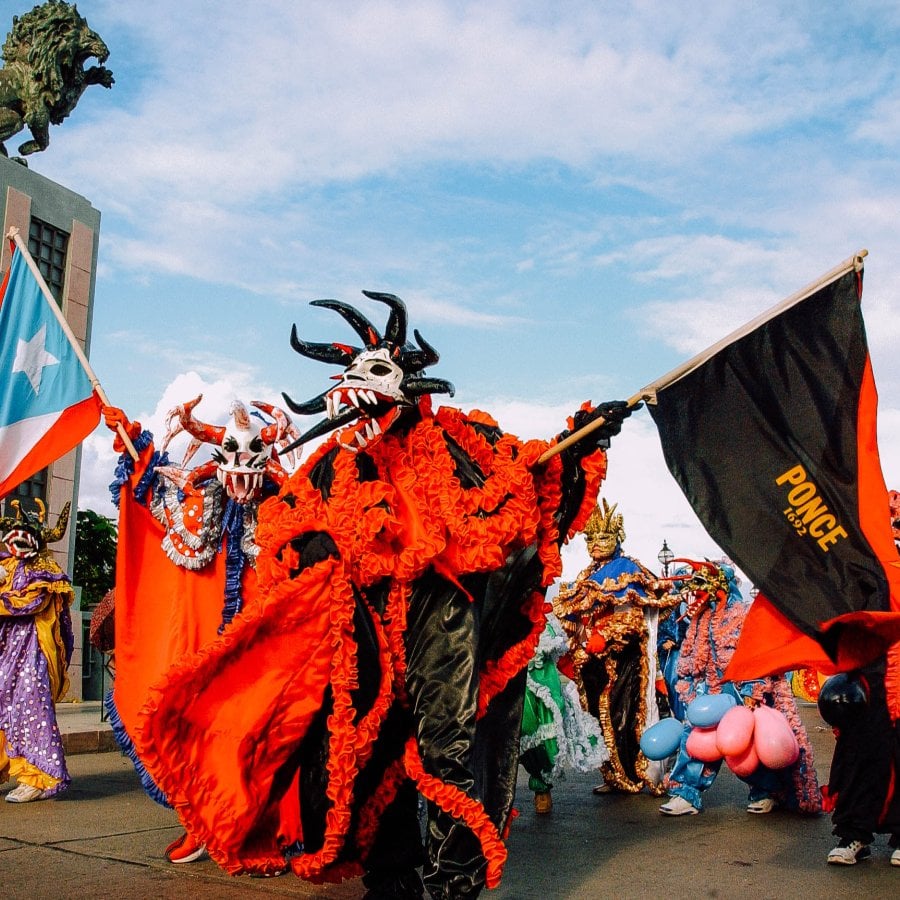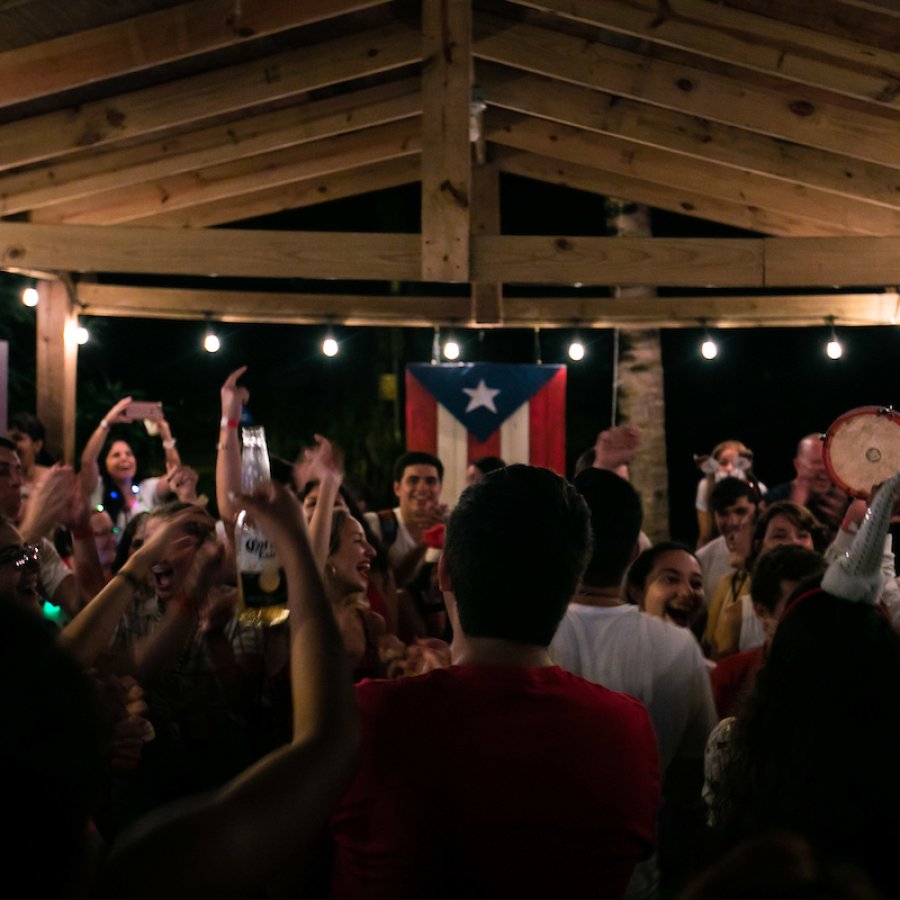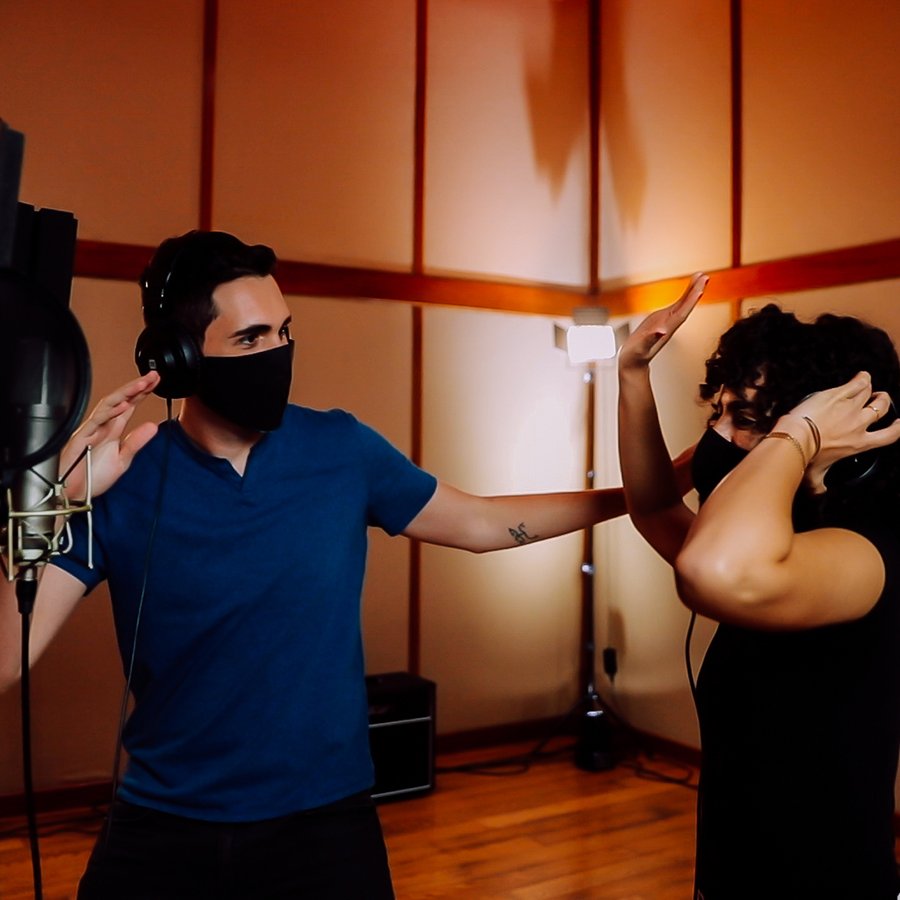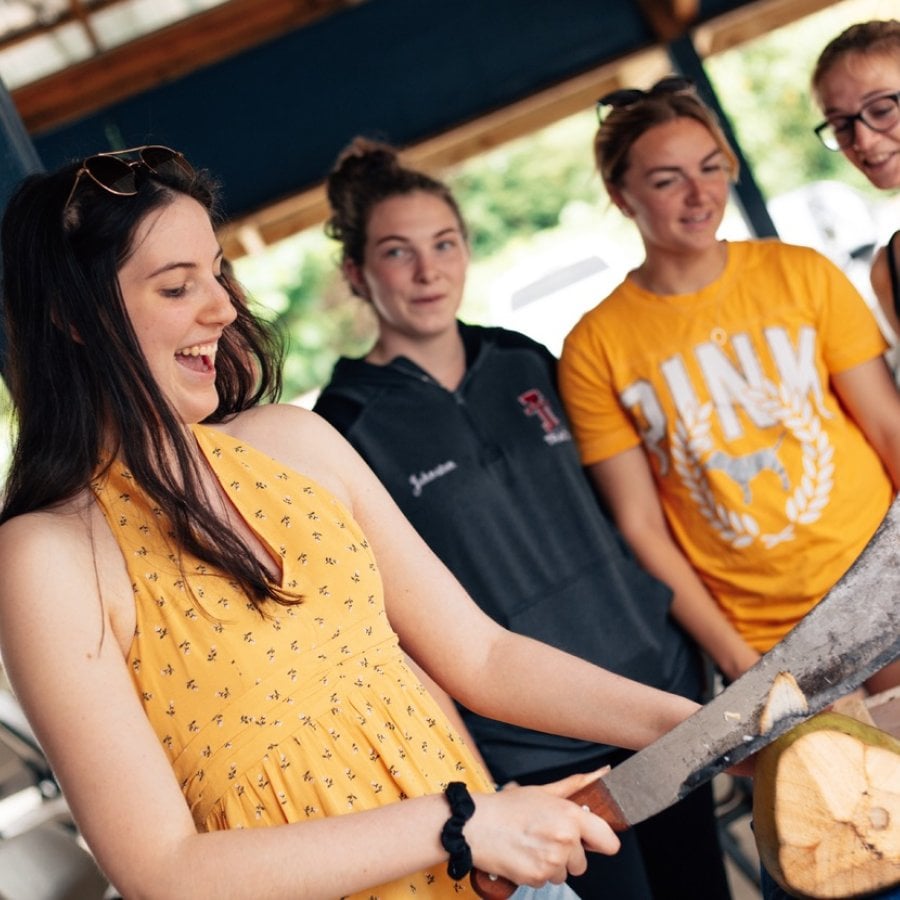Passion. Joy. Sadness. Confusion. Jealousy. In Puerto Rico, you don’t just listen to bomba—you feel it!
Before salsa and reggaetón, there was bomba. The name not only refers to the ancient music genre, but it is also the name of the instruments and the dance that accompanies the music. Bomba is everything.
Learn more about this genre of music and how it shaped Puerto Rican culture.
What is Bomba?
Bomba is a unique genre of music where the dancer sets the rhythm for the musicians rather than the other way around. It resembles a conversation between one dancer in the center and the main bomber. The music can be an upbeat holandé, which is played and danced with great enthusiasm, or a yubá, which is more somber and spiritual. Other popular rhythms of bomba music are sicá, cuembé, seis corrido, and corvé. There are around 16 bomba rhythms, with plenty of variations depending on the region.
Bomba is often sung by three or more singers and a solo singer, following the lyrical characteristics of a son, where the solo singer leads with a chorus that the chorus of singers repeats, with an improvised verse in between. As far as the beat, the tocador (main or primo barrel) scores the dancer makes, and the buleador (secondary barrel) follows the rhythm until the cantador (solo singer) says so. The dancer enters the space to stroll around, greets the tocador, and begins its piquetes (improvised bomba steps). Then begins the musical dialogue between dancer and tocador — once the dancer is finished, they will bow to the tocador, and then the next dancer will enter the stage. Female dancers mark their piquete with their bodies and petticoat skirt, while male dancers will use their bodies.
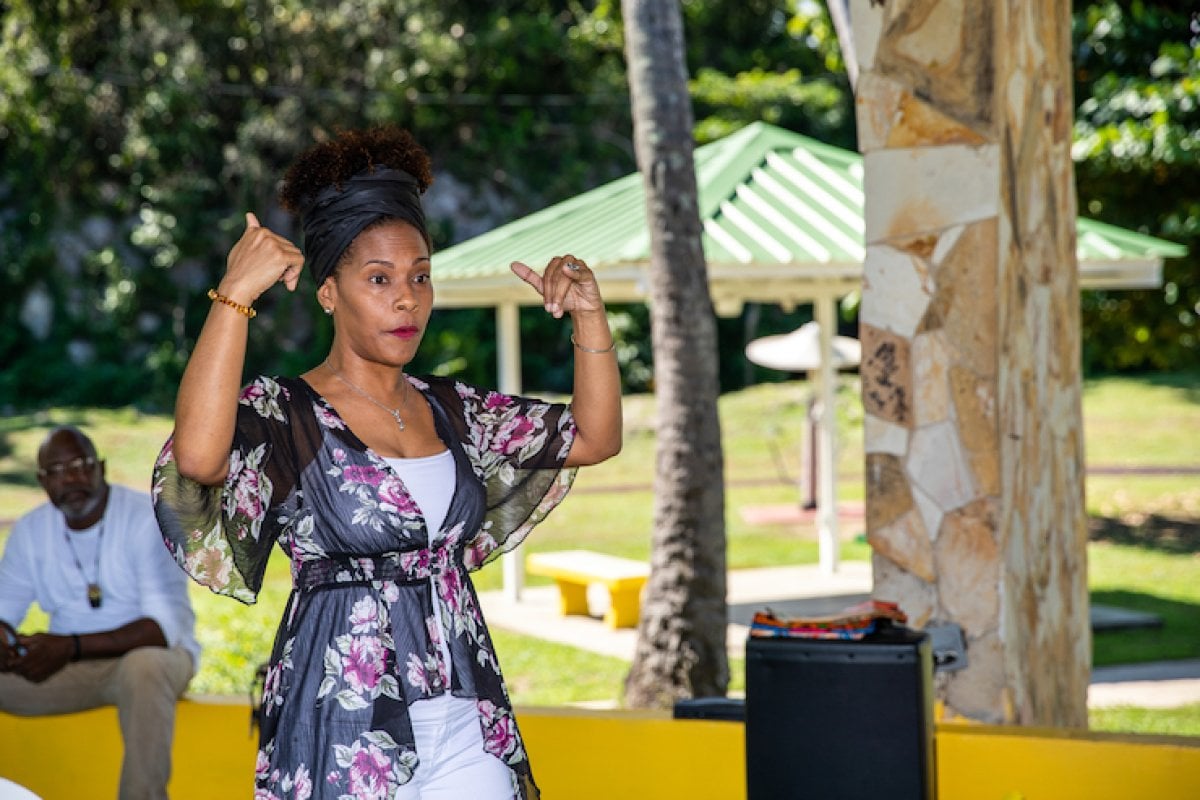
Women performs the Bomba in the town of Loíza.
What Instruments Are Used in Bomba?
The main instruments used are the bomba barrel, maracas, and the fuá (also known as cuá), which are wooden sticks used to beat on the side of the drum. The bomba barrel is traditionally made from a rum barrel, with the top covered in goatskin. When playing bomba, you will often have two sizes of drums, a smaller and higher drum that plays the primo part, while the larger and wider drum plays the buleador rhythm.
The History of Bomba
Bomba was brought to Puerto Rico by African slaves in the 16th century, mostly from people belonging to Sudanese and Bantu cultures.
Bomba was the African slaves’ method of expressing themselves, and although it originated in Puerto Rico, it echoes across the Caribbean. The songs, many of which are still sung today, showcased the lamento among the sugarcane plantation workers, who bared their collective souls during gatherings.
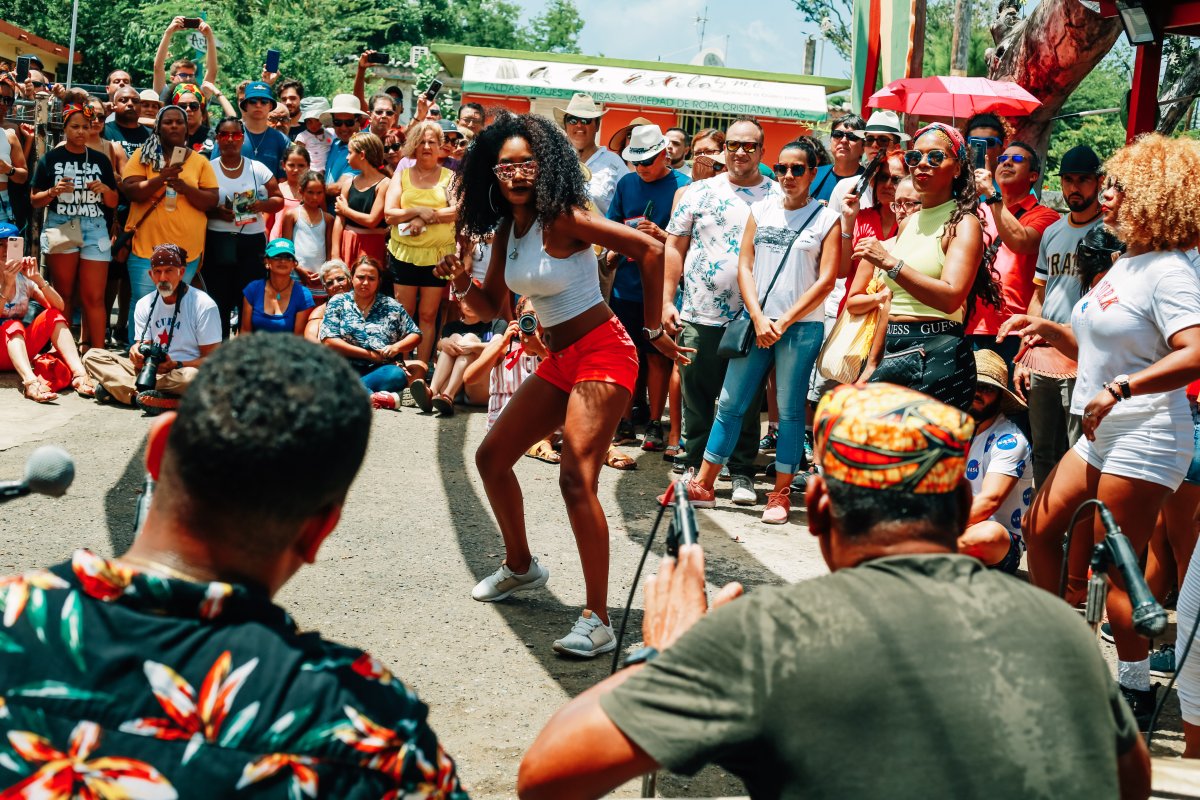
The Cultural Legacy and Evolution of Bomba
Bomba’s influence on Puerto Rican culture is as long-standing and profound as the Island’s African heritage. Being one of the first genres of music that was unique to Puerto Rico, it’s easy to see Bomba’s rhythms and traditions make their way through plena, reggeaton, salsa, and other music.
In ancient times, men used to dominate the bomba scene with strong jerks and sharp steps, while the women used skirts to make subtle swings and shy movements. Then came Caridad Brenes de Cepeda, a woman who broke the unspoken rules of bomba, changing the genre forever. She used her skirt to make more aggressive moves, raising it higher than before as a sign of rejecting oppression.
Now, bomba in Puerto Rico is dominated by a proud female presence, from singers to drummers and dancers who take the space to express their frustrations about inequality, gender gaps, and other struggles
Make our "Bomba" dance and music your own, as we share with you the history behind this traditional genre from Puerto Rico.
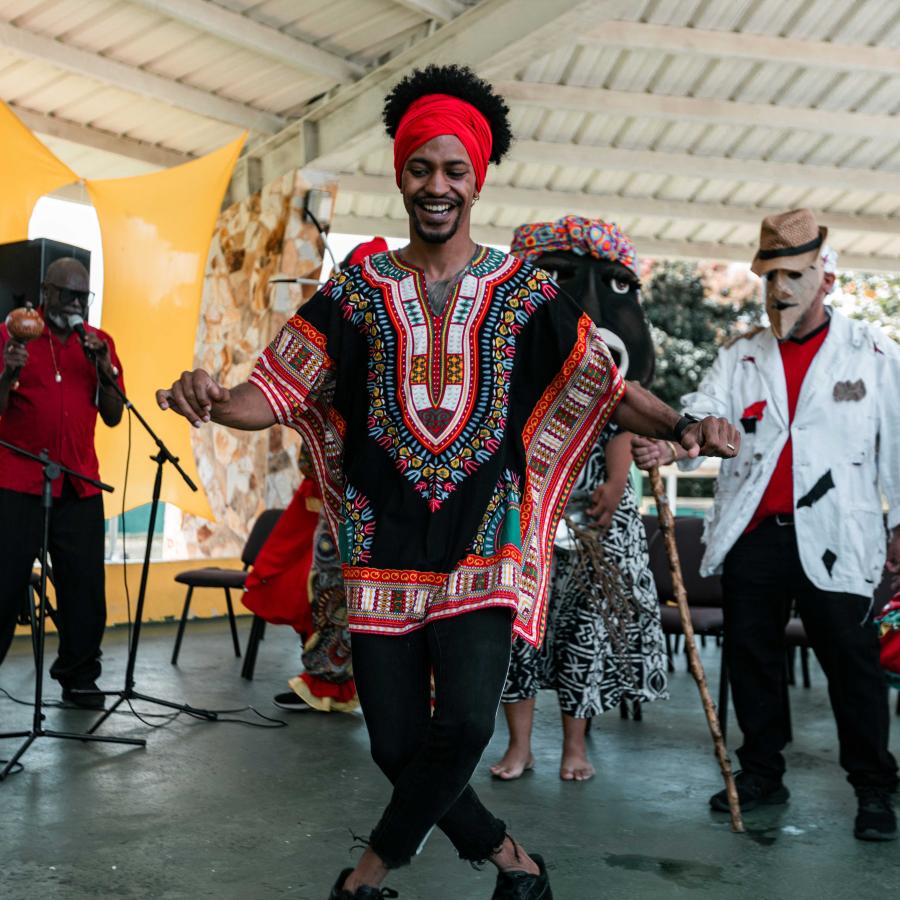
Where can I enjoy Bomba in Puerto Rico?
There are many places where you can learn this Puerto Rican tradition right alongside the Boricuas who carry it on. Schools like the Don Rafael Cepeda School of Bomba or El batey de los Hermanos Ayala are now teaching bomba drumming and dancing to new generations. Meanwhile, you can enjoy a night of live percussion, songs, and dance at places like La Terraza de Bonanza in Santurce, El Boricua in Río Piedras, La Vergüenza in Old San Juan, and others that offer weekly performances.
Whether you dare to join in the dance or enjoy from the sidelines, you’ll have a fun night of ritmo y sabor mingling with locals as you soak in some Puerto Rican heritage that will surely captivate your heart and soul.
Comment Guidelines
We value your thoughts and want to foster a respectful and engaged community. As such, we ask that you adhere to the following guidelines when posting comments
- Please ensure your opinions are expressed respectfully.
- We won’t remove comments that engage in courteous debate but hate speech or any form of profanity will not be tolerated. This also applies to the inappropriate use of emojis or hashtags.
- Do not downvote or dislike a comment simply because you disagree with another person’s views.
- Self-promotion and external links are not allowed and will be removed.
- Avoid sharing private information about yourself or others. Doxing (the act of leaking personal information with harmful intent) is strictly prohibited and will result in a ban.
- Comments that are off-topic will be deleted.
Paradise for Your Inbox
Get travel inspiration, news, tips and more delivered monthly.

